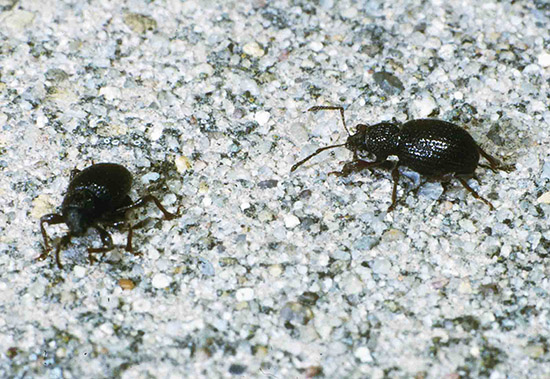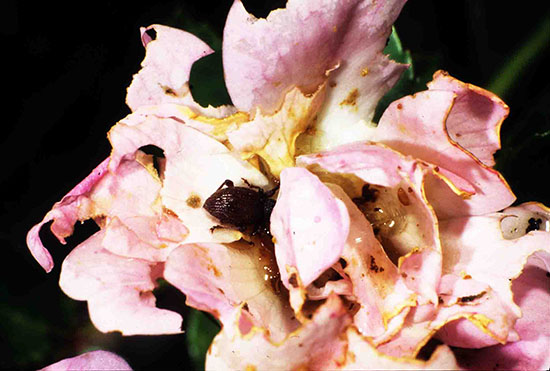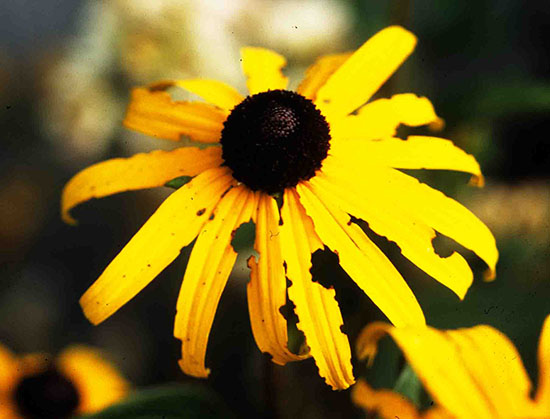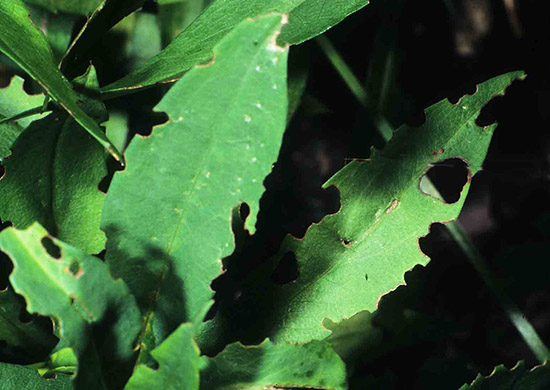Issue 9, June 20, 2016
Strawberry Root Weevil
Unexplained notches eaten out of the foliage and flower petals of rose, daisy, black-eyed Susan, aster, trumpet creeper, strawberry, and other plants may be caused by adult strawberry root weevils.
Strawberry root weevils are smaller relatives of black vine weevil, causing similar damage to a wider array of plant species. The adults are hard-shelled, blunt-snouted weevils about one-quarter inch long. Those that have newly emerged from pupae are brown and slowly turn black. They have no spots or other distinguishing markings. Like black vine weevils, they emerge at this time of year and are long-lived, with some entering houses and surviving through the winter.

Strawberry root weevil adults.
Adults feed on many plant species, eating small to large notches in leaves and flower petals during the night. They can commonly be found still feeding in the early daylight hours. Most spend the day in debris beneath the plants, but a few can be found hiding between petals of compound roses and other flowers. They are all females and cannot fly. They lay eggs after feeding for a few days when their ovaries have matured.

Strawberry root weevil and damage to rose.

Strawberry root weevil and damage to black-eyed Susan.

Strawberry root weevil and foliar damage to black-eyed Susan.
Eggs hatch into larvae that are legless, whitish, and curved with brown heads. Mature larvae are about one-quarter inch long. They feed on the roots of many plant species, preferring strawberries, conifers, and other ornamental plants. Root-feeding on strawberries can be damaging but is not severely damaging to other, larger plants. In late spring, they pupate, emerging as adults.
Adults are controlled with acephate (Orthene), acetamiprid (TriStar), or bifenthrin (Onyx). Spray the foliage to runoff, allowing penetration into mulch and debris beneath the plants where the adults spend the day. Do not spray blossoms to reduce impact on pollinators. Treat soon after damage is noticed to not only avoid more damage but also to eliminate the beetles before they can lay eggs.
Larval control is not typically feasible in the landscape or nursery due to the large variety of plants that function as larval hosts. If larval hosts are identified, Heterorhabditis bacteriophora and other insecticidal nematodes have been shown to be effective. (Phil Nixon)
Author:
Phil Nixon